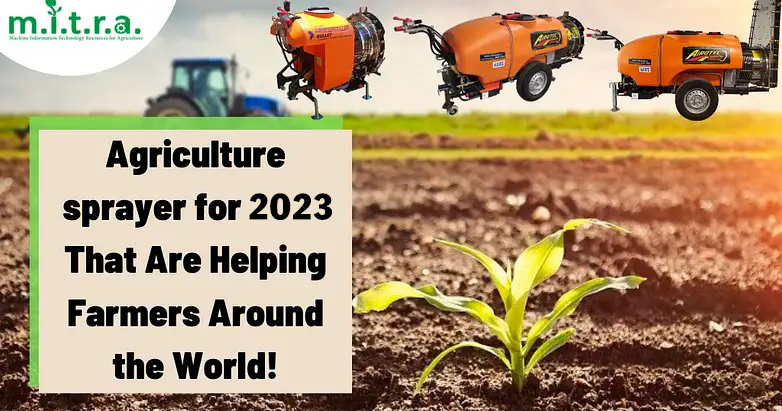Agriculture sprayer is a complete spray system that generates pressure to propel spray fluid from a tank to the sprayer’s nozzles, which then spray the crop or soil. Sprayers come with various features that impact their performance and appropriateness for multiple tasks. Understanding the multiple sprayer models and their features might assist you in choosing the ideal sprayer for the job. Today’s industry offers ten popular sprayer options: backpack, spot, ATV, UTV, tow behind, truck bed, 3-point hitch, boom, boomless, and mist. The number of nozzles, maximum PSI pressure and GPM flow rates, sprayer pump type, tank gallon volume range, possible full spray coverage, overall system mobility, and total hose and nozzle reach vary across sprayers. Water, insecticides, pesticides, herbicides, and fertilizer are commonly applied with sprayers. A sprayer’s cost may vary depending on the features. You can select the perfect spray tip for your air-assisted sprayer, whether you need our basic or fine finish pre-atomizer versions.
- Understand your task and how you’ll utilize the sprayer, such as perimeter treatments, spot applications, row crops, and grow operations.
- Identify current sprayer types, model differences, and best-practice application situations, such as boomless sprayers for wide-swath coverage of difficult-to-reach locations, mist sprayers for full-depth range, and truckbed sprayers for high capacity, high-pressure mobility.
- Determine the performance criteria and equipment components of the appropriate sprayer.
- Check for any chemical compatibility issues with the sprayer pump, hose, and gasket.
Specifications for Agriculture Sprayer Machine
It’s essential to understand the requirements before selecting a job-specific sprayer for the best spraying performance. Buying a small tractor sprayer with a PTO blower is the most effective way to spray your entire grape yard. We offer a high-quality ultra- low volume sprayer for all gardening solutions. There are nine variables to consider while spraying applications:
- Spray Area Size
- Spray Target and Spray Fluid
- Spray Location and Terrain
- Sprayer Fluid GPM Rate
- Sprayer Fluid PSI Pressure
- Total Spray Project Fluid Volume
- Sprayer Tank Gallon Capacity
- Spray Application Frequency
- Spray Application Duration
Ranges of Sprayer Performance and Operation
Each sprayer performs differently in terms of volume capacity, pressure and GPM flow rates, spray coverage, boom compatibility, and hose lengths. These variables determine which sprayer is most suited for this purpose.
Types of Sprayers
- Air Blast Sprayer
- Boom Sprayer
- Duster
- Rotavator
- Smart Sprayer System
Agriculture Sprayer Applications and Uses
Crops, land, and cattle are all sprayed by sprayers in agriculture. Commercial uses of maintenance chemicals (such as property line, landscape maintenance), groundskeeping (consumer, business, state/governmental), and the nursery and garden sectors of plant raising are all businesses where sprayers are regularly utilized. A Tractor sprayer machine makes it easier for the farmer to work. Here’s an overview of some of the most popular sprayer tasks:
Performance Chemicals, Field Operations, Row Crop Operations
- Pastures, Farmland, Orchards, Vineyards, and Greenhouses Irrigation and Fertigation
- Pesticide and insecticide applications in a variety of scenarios
- Spray Applications in Hard-to-Reach, Off-Road, and Rolling Land
- Maintenance of Structural, Property and Fence Perimeter, Roadway Foliage, and Pests
- Pest Control for Livestock, Pastureland Insects, and Plants
- Firefighting and Burning Control
- Target spot, high-pressure washing, and cleaning

